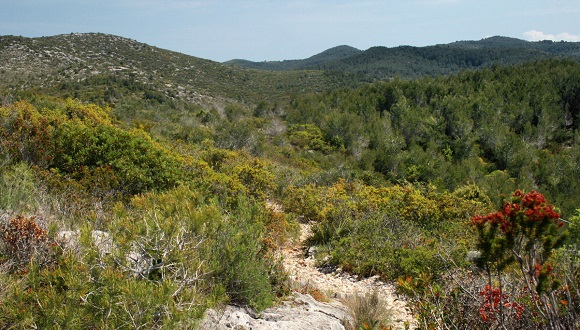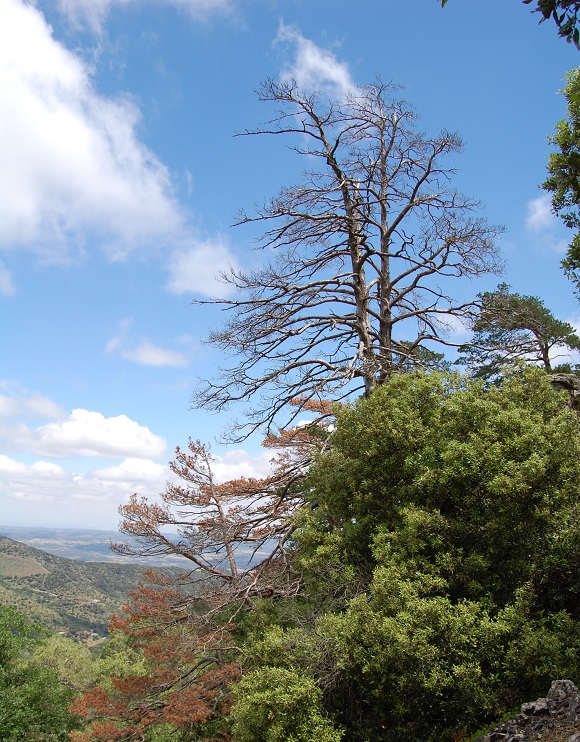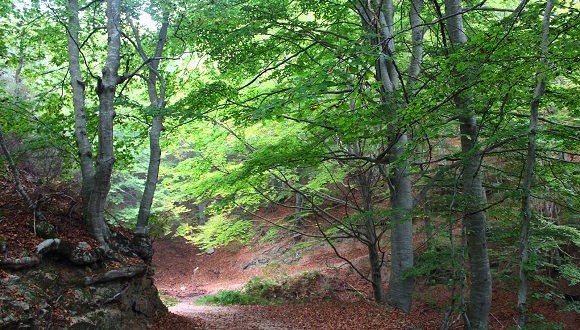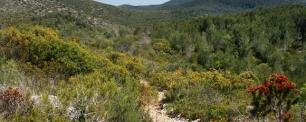Climate change is already threatening the Mediterranean ecosystems of Catalonia
An extensive review of studies and databases reveals that drought and an increase in temperature are already causing species substitutions, greater aridity, higher forest fire risk, lower soil fertility, and lower water availability, among other negative impacts.

A large research team at CREAF led by Josep Peñuelas has compiled data from previous studies, experiments, and data obtained in the field over a long period of time in three Catalonian terrestrial Mediterranean ecosystems. The review concludes that climate change is already altering Mediterranean forests and scrublands, and that this will only worsen in the coming decades. The substitution of some species by other more resilient species, and possible replacement of forests by scrub, are predicted to be the most visible consequences of climate change. Improving understanding of the capacity of plants to acclimate and adapt to new conditions, together with more effective forest management, should be prioritized to minimize negative effects.
“The results obtained in Catalonia can be extrapolated to other areas, because these are ecosystems which are characteristic of the Mediterranean Basin."
Climate change is causing droughts which are more numerous, severe, and longer than before, in addition to an increase in temperature –with Catalonia already experiencing an increase of 1.6 ºC since 1950— making this Mediterranean region even drier. Studies included in the review included field experiments and more than 20 years worth of data logs from three ecosystem types: holm oak forests in the Prades region; semiarid scrublands recently affected by fire at Garraf; and temperate, humid forests over a gradient from holm oak to beech forests at Montseny. “The results obtained in Catalonia can be extrapolated to other areas, because these are ecosystems which are characteristic of the Mediterranean Basin,” says Josep Peñuelas, researcher at CSIC and CREAF.

The more resistant scrublands may substitute Mediterranean holm oak forests
The research has revealed that there are species which are better able to resist the increased temperature and droughts than others; “this makes us think that in a future, more arid scenario, the composition and distribution of species will change in the Mediterranean,” says Peñuelas. He adds: “it is possible that current holm oak forests become scrublands in the future since they are more resistant to these conditions.” This is similar to what is happening in other areas of the Iberian Peninsula, where a lack of forest management and climate change are accelerating the replacement of pines by holm oaks.
Not all of the study’s results are so negative. It was observed that, generally speaking, Mediterranean species displayed quick acclimation and adaptation to natural or experimentally-induced changes in environmental conditions.
The results have also demonstrated that drought and temperature increase can impede the growth of fairly resistant species such as the holm oak and strawberry tree, whereas there have even been die-offs during severe droughts. Another effect of climate change on Mediterranean plant species is the alteration of periods of flowering, fruiting, and the quantity and dispersal of seeds. It has also been shown that “drought causes many plants to emit more volatile compounds, which are in fact flammable and increase fire risk,” says Joan Llusià, CREAF researcher and one of the study’s authors.
Young ecosystems are of particular concern, as well as those which have recently undergone disturbances such as fire, wind, or severe drought. This is the case of the Garraf Massif, which suffered a large forest fire in 1994. “Young ecosystems are the most vulnerable to climate change,” says Peñuelas.

Lower availabilities of soil water and nutrients
Soil is one of the ecosystem components which will suffer the most with climate change since nutrient cycles will become highly altered. The availability of water and nutrients such as phosphorus, nitrogen, and potassium will be reduced. “A slight reduction in water availability can spell great difficulty for forests to retain and accumulate nutrients which are carried away by strong rain,” says Jordi Sardans, study author and CREAF researcher. The capacity of soil and vegetation to retain carbon will also be reduced, so it will likely return to the atmosphere and thereby increase CO2 levels.
The substitution of some species by other more resilient species, and possible replacement of forests by scrub, are predicted to be the most visible consequences of climate change.
Notwithstanding, not all of the study’s results are so negative. It was observed that, generally speaking, Mediterranean species displayed quick acclimation and adaptation to natural or experimentally-induced changes in environmental conditions. Plant communities underwent genetic changes and gene expression, factors which would have helped to ward off the severest effects of drought and temperature. This, along with adapted and improved forest management, provide a glimmer of hope for mitigating the effects of climate change in the coming decades.
REFERENCED ARTICLE
Peñuelas J., et al. (2017). Assessment of the impacts of climate change on Mediterranean terrestrial ecosystems based on data from field experiments and long-term monitored field gradients in Catalonia. Environmental and Experimental Botany. DOI 10.1016/j.envexpbot.2017.05.012






